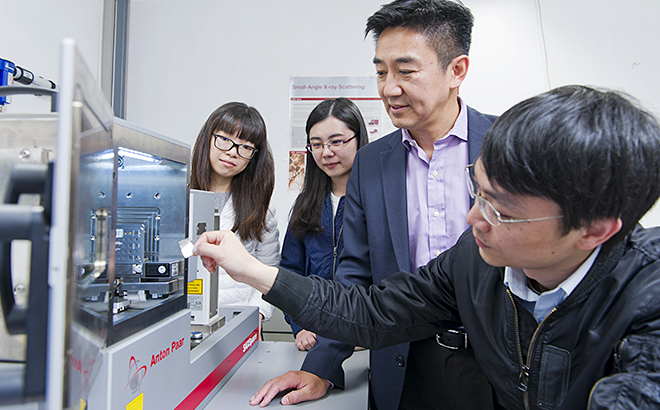40-year mystery solved by scientist group led by CityU
A hidden amorphous phase in the formation of metallic glass uncovered by an international research team led by City University of Hong Kong (CityU) will expedite the development of new and better alloys.
The discovery solved a 40-year scientific mystery, said Professor Wang Xunli, Chair Professor of Physics and Head of the Department of Physics and Materials Science of CityU, who headed the project. “We hope to find a way to develop novel materials by manipulating the nanoscale structure of metallic glass,” Professor Wang said.
Metallic glass is considered to be the material of the future. It is stronger and more compliant than crystalline alloys, a combination that leads to high resilience that can sustain larger elastic deformation.
Because of these properties, metallic glass has been used in a range of applications such as sports equipment, medical devices and electricity transformers. A long-standing issue in metallic glass research is to figure out the structure or atomic packing in the material.
Fundamental understanding of the structure is important because the structure determines the properties. The discovery of the hidden amorphous phase, where atoms show a different kind of packing, has allowed researchers to make use of simple processing methods such as heat treatment to develop novel materials.
“The discovery is an important observation in glass physics. We can explore how to produce or induce this amorphous phase in metallic glass so that we can tune the properties of the material for larger size and better application,” Professor Wang said.
This research achievement, which has been published in the internationally acclaimed journal Nature Communications, embodies the true spirit of international collaborations, involving scientists from four continents. The research has been designed at CityU, but the team took advantage of state-of-the-art facilities, the synchrotron source at Argonne National Laboratory in US, the ultra-high voltage electron microscope at Hokkaido University in Japan, and the neutron scattering instrument at the Australian Center for Neutron Scattering in Australia.
